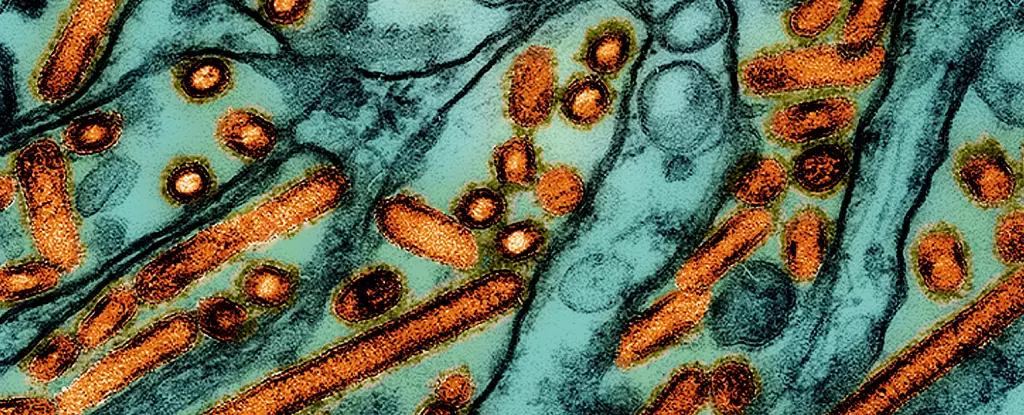The emergence of a critical avian influenza case in Louisiana has raised significant alarms across the United States, marking a serious chapter in the ongoing battle against this virus. As announced by U.S. authorities, the elderly patient in critical condition represents the first serious human case related to the ongoing H5N1 outbreak in 2024, which has thus far resulted in 61 infections nationwide. It is important to note that previous cases had predominantly exhibited mild symptoms, typically allowing individuals to recover at home, thus magnifying the concern surrounding this particular incident.
The severity of the Louisiana case not only heightens anxiety on a local level but also draws parallels with similar severe cases reported globally. For instance, a teenager in Canada was recently hospitalized, signaling a wider trend that experts are closely monitoring. The potential implications of these cases resonate profoundly as health officials race to comprehend the evolving nature of this outbreak.
According to the U.S. Centers for Disease Control and Prevention (CDC), the Louisiana patient came into contact with sick or deceased birds within backyard flocks, igniting debates over the safety of interactions with domesticated and wild avian populations. The Louisiana health department indicated that the patient is suffering from severe respiratory illness linked to H5N1 infection, emphasizing the fact that this individual is over 65 years old and has underlying medical conditions. This correlation raises critical discussions around the vulnerability of certain demographics and the urgent need for effective mitigation strategies.
Demetre Daskalakis, a high-ranking CDC official, highlighted prior historical data to stress the potential risks associated with the H5N1 virus. “Over the last two decades, H5 infections have been tied to notably severe illness, with death rates reaching up to 50 percent in several cases,” he revealed in a media briefing following the Louisiana outbreak. This statement serves as a stark reminder of the gravity contained within avian influenza threats.
Statewide Responses and Policy Changes
In response to the critical situation, California, the most populous state in the U.S., declared a state of emergency. Governor Gavin Newsom’s announcement signified a proactive approach aimed at mobilizing government resources to effectively combat the outbreak. This strategic declaration reflects a broader trend among states facing the implications of avian influenza, indicating readiness to bolster surveillance infrastructures and support agricultural sectors affected by these health crises.
The origin of this current outbreak tracks back to March when it was first identified in dairy cows, introducing a new layer of complexity to efforts intended to monitor and contain the virus. Interestingly, genetic sequencing revealed that the H5N1 strain linked to the Louisiana patient belonged to a genotype recently identified in wild birds and poultry. The D1.1 genotype highlights a differentiating factor from the B3.13 genotype previously catalogued, further illustrating the nuanced challenges health officials face with this pathogen.
As scientists grapple with the consequences of this outbreak, concerns about the adequacy of disease surveillance mechanisms arise. Experts, such as Louisiana State University researcher Rebecca Christofferson, emphasize the potential for undetected zoonotic spillovers or even the possibility of asymptomatic human-to-human transmission. While she expresses caution against panic, she urges for increased vigilance and public awareness efforts, suggesting that the ongoing surveillance capabilities need enhancement to avert a potential crisis.
Contrastingly, some professionals indicate a more urgent perspective. Epidemiologist Meg Schaeffer articulates that numerous indicators suggest avian flu “is knocking on our door,” reminding us of its potential to evolve into a new pandemic. This juxtaposition of expert opinions encapsulates the complexity of the situation, signifying a call to action for public health agencies, governments, and communities as they navigate the uncertain nature of contagion and the potential repercussions of avian influenza.
The Road Forward: Preparedness and Public Health Initiatives
In light of these circumstances, the U.S. has stockpiled vaccines aimed at combating avian flu should transmission to humans escalate and is actively investigating experimental options. Recent studies demonstrate promising results with mRNA vaccines that successfully protected ferrets from the virus, suggesting that scientific innovation may pave the way for preventative measures.
With the USDA responding to the crisis by implementing measures mandating reporting of any avian flu-positive samples taken from dairy farms, it becomes increasingly clear that robust public health initiatives are paramount. As lessons from this outbreak unfold, the interplay of strategy, monitoring, and communicative transparency will dictate how effectively the nation navigates future avian influenza challenges. While the threat remains real and potent, collaborative efforts and rigorous public health policies will be crucial in mitigating risks and safeguarding public health.

